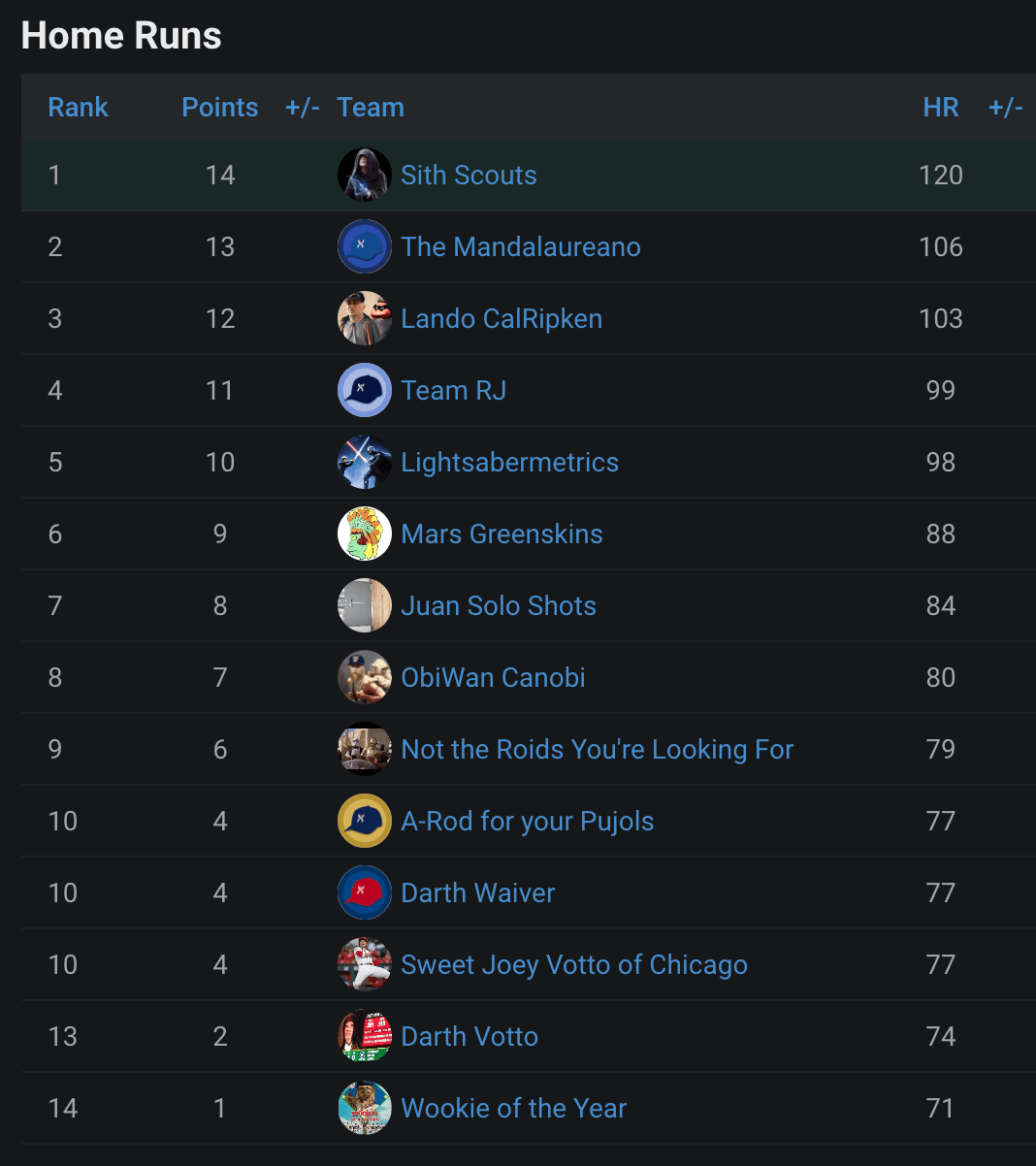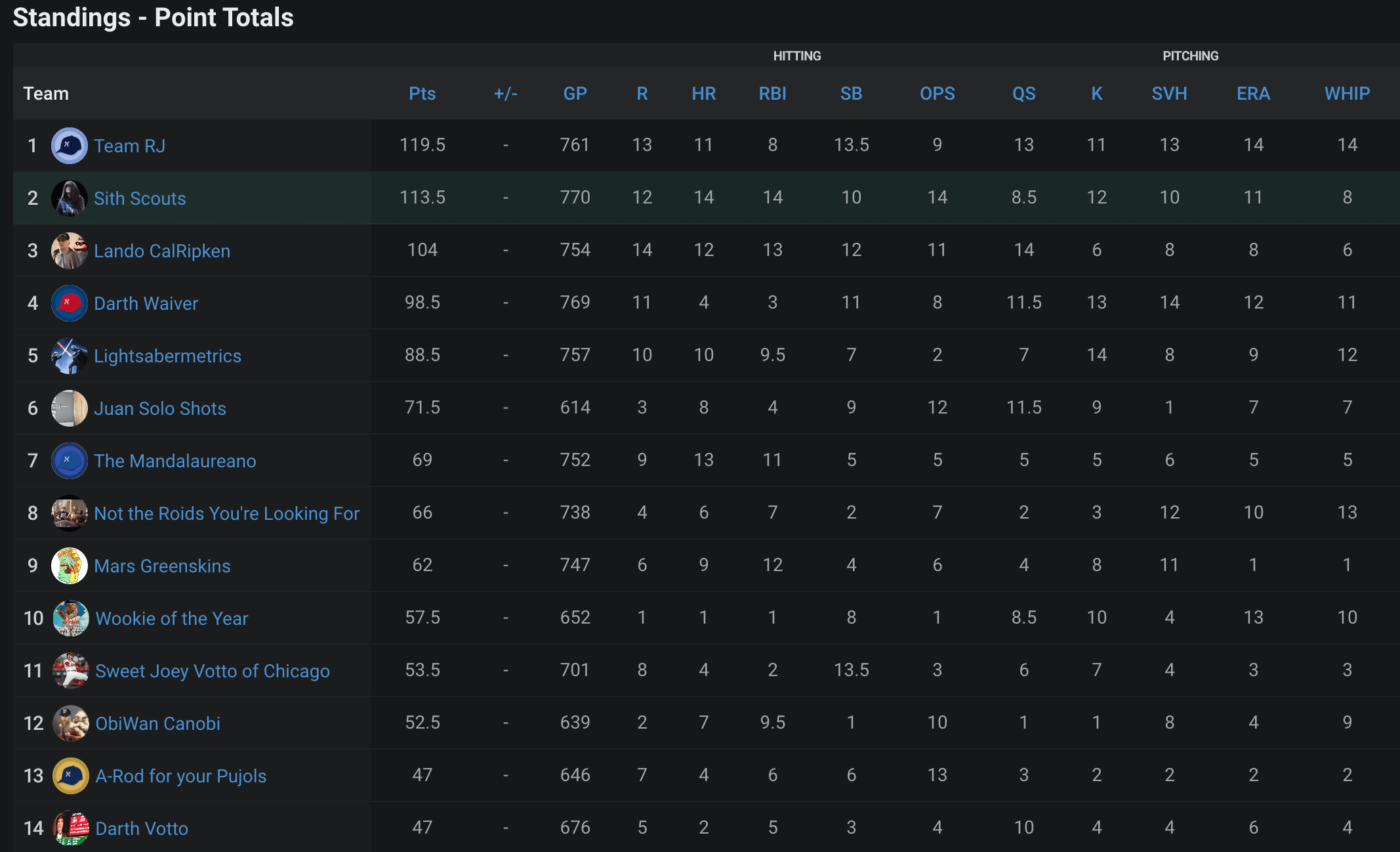
You can smell baseball in the air; Spring Training is in full swing. Do you know what that means? It means it is Fantasy Baseball draft season. Some of you have been drafting since October, or maybe that’s just me! Others are just getting started. Today, I want to bring you a Fantasy Baseball strategy guide for rotisserie leagues or what we like to call “roto.”
What?! Your league is not planning on using Fantrax? Inconceivable! Check out everything Fantrax has to offer and I’m sure you’ll come around to our way of thinking.
Fantasy Baseball Strategy: Roto
What is a Roto League?
Roto scoring leagues are based around statistical categories. The cumulative stats of your team are weighted against other teams in your league. The better you rank in a category, the more points you will be rewarded. If you play in a 102-team league and finish first in the home run category, you will be rewarded 12 points. The second-place team in that category would be rewarded 11 points, the third-place team would receive ten, all the way down to the last place team receiving one point in that specific category. You can see the scoreboard below to get an idea of how it works. Here were the home run totals from a dynasty league I run. My team, Sith Scouts, finished first in home runs and was rewarded 14 points for that category because it is a 14 team league.

Below you will find the overall standings from that same league. Like home runs, each category is added together to bring you the final standings. Finishing high in most categories will be your recipe to success in roto formats. Some players like to punt categories, but I find it harder to win in a roto format if you totally punt a category like saves.

Scoring
The league I listed above is not your standard scoring for roto leagues. While scoring is evolving in some leagues, with many going to OBP instead of batting average, the standard 5×5 scoring has stayed consistent for many years. The standard five categories are batting average, home runs, stolen bases, runs, and RBI on the hitting side. For pitching, the five are wins, strikeouts, saves, ERA, and WHIP.
Luckily, if you play on Fantrax, you have the freedom to customize your league with nearly any baseball stat possible. One of the most important Fantasy Baseball strategy advice that I cannot stress enough is to read your league settings and constitution. Know your league scoring and roster settings. I cannot tell you the countless times I have been in draft rooms, and someone makes over 100 picks without realizing it was OBP scoring instead of average. If you want to be successful in Fantasy Baseball, it starts with the basics. KNOW THE RULES!
Rosters
Standard Rotisserie rosters for Fantasy Baseball have not changed much over the years. Standard roto rosters are 2 catchers, first base, second base, third base, shortstop, 1 middle infielder, 1 corner infielder, 5 outfielders, and 1 utility spot. On the pitching side, 9 pitching roster spots are the standard that you can use with any combination of starters or relievers.
Would I love for the two catcher standard to go away? Absolutely. But that is the standard for most leagues and what we roll with. Be sure to check your league settings. Draft strategy varies significantly between one and two catcher leagues. There is a good chance your roto league could have different roster settings. Know the settings and adjust accordingly.
Fantasy Baseball Strategy: The Draft
When it comes to draft day, it is important to be well prepared and know your draft strategy. It is also essential to know the player pool. If you play in a shallower 10-team league, you will not need to go as deep in the player pool. If you are in a deeper 15-team roto league where you will roster 30 players, you will need to go deeper in the player pool.
Cheat sheets are a great place to begin. If you are a live draft, you will not be able to research quickly enough between picks. Be prepared and find a cheat sheet. Or, you can even create your own. Either way, it can be a help to you come draft day.
What factors matter in a roto draft? What categories should you target hard early on? Let’s take a look.
Statistical Targets
The goal of a roto league is to win and accumulate the most points possible. You do that by accumulating points in different categories, as we discussed. I have pulled data from the last three seasons on the NFBC to provide 80th percentile targets for both 12 and 15 team leagues. If you can hit 80th percentile targets for every category, you stand a good chance to win your league.
12-Team 80th Percentile Targets

15-Team 80th Percentile Targets

Take these target numbers and try to reach each of them. It can be a tall task to hit all these thresholds, but if you can reach them based on projections, your team should be set up nicely.
Let’s take a look at an approach to help reach these targets.
Starting Pitcher Strategy
Aces are scarce. We have seen the “pocket aces” strategy implemented more than ever in 2021. “Pocket aces” was popularized by Toby (@batflipcrazy). It basically means starting your drafts with two starting pitchers in the first two rounds. If both of your aces that you draft pan out and stay healthy, you get a huge advantage on your competition in pitching categories. Aces will anchor your ratios, and you will likely rack up wins and dominate strikeouts. This strategy can work if you are comfortable with the hitting pool later in drafts.
Even if you choose not to draft two starting pitchers in the first two rounds, I think it is crucial to draft two starting pitchers in the first five rounds of the draft. Elite starting pitching bottoms out fast, so grabbing starting pitching early will give you a boost.
At the end of the draft, I want to come away with at least five of my top 35 starting pitchers. You can find our consensus staff rankings here.
Relief Pitcher Strategy
When to draft closers is always a highly debated topic in the Fantasy Baseball community. Some suggest grabbing top guys like Josh Hader and Liam Hendriks and forgetting about saves until later in the draft. Others prefer to wait on saves until later. There is no right or wrong answer here. Alex Fast publishes a great piece each season titled: “We are Drafting Saves Wrong.” Give it a read for an in-depth study on drafting saves.
We know the bust rate is high with closers. Last season, Kirby Yates was the second closer off the board with an ADP of 79. He recorded 2 saves and pitched 4 innings. In 2019, Edwin Diaz was the top closer off the board after coming off a 57 save season. He rewarded owners who drafted him with a 5.59 ERA. In 2018, Corey Knebel was the second RP off the board at an ADP of 67. He only recorded 16 saves that season.
You get the picture. The list goes on and on of relief pitchers who we would consider busts. In 2021, nine relief pitchers are being selected in the top 120 picks—four of those in the top 75. Right now, I feel comfortable projecting about half of the teams closer in baseball. There is so much uncertainty and volatility in the closer market that does not make closers worth paying up for.
Personally, I like drafting my first closer in the Brad Hand, Ryan Pressly range. Sometimes that feels like a stretch. There are plenty of good late rounds options available. A lot of bullpens are still up in the air. Depending on league depth, handcuffing closers is also a solid option.
Fantasy Baseball Strategy: Drafting Hitters
Hitters consume a large portion of your team in roto leagues. How should you target categories? Does position scarcity matter when drafting? A great place to start is by checking out my top-250 hitters for 2021.
Power for you, Power for everyone
The 2019 juiced ball saw home runs grow to an all-time high. In 2019, 6776 home runs were hit league-wide after just 5585 the previous season. In 2020, 2304 home runs were hit over 60 games, leading to a 162 game pace of 6220. Reports from MLB say that they will be deadening the ball for 2021. By the looks of home runs being hit in Spring Training, I would say it is not. But who knows with Major League Baseball.
Even if home runs are down league-wide in 2021, there is still plenty of power to go around. According to ATC projections, 37 players are projected for 30 or more home runs. 10 of those players are going after pick 100 on average. 72 players are projected to hit 25 or more home runs. 19 of those 72 players are going after pick 150.
I would not stress about drafting power early on. Focus on other categories that are more scarce, like the one we will discuss next.
Stolen Base Scarcity
This should not surprise you one bit. Steals are down league-wide. Since 2011, steals are down over 30 percent. League-wide stolen base totals have declined every season since 2016.
This leads us to the question of how should we attack stolen bases? Players who steal bases at a high clip get pushed up in drafts. Is it worth paying up for them?
With power in excess and stolen bases at a premium, drafting players who steal bases early is important. Usually, these players also contribute across the board, helping you in all categories.
When those players begin to thin out after the third round, I begin to take the “chip-away.” Every stolen base matters, especially with how scarce they are. Drafting players who chip away at that total number of steals you need. If a player can give you between 5-10 stolen bases, they are worth it. Those steals add up and help you reach those percentile marks we discussed earlier.
Summary
There is no right or wrong way to draft. You can build a great team by starting with a hitter or a pitcher in the first round. Some players can make it work by waiting on starting pitcher until after pick 100. Fantasy Baseball strategy varies from person to person. Do your research and find out what works for you! Find the strategy that you can coin your own. Most of all, have fun!
Take the tips I provided and dominate your drafts. Best of luck this season.
For more great rankings, strategy, and analysis check out the 2021 FantraxHQ Fantasy Baseball Draft Kit. We’ll be adding more content from now right up until Opening Day!
Fantrax was one of the fastest-growing fantasy sites of 2020 and we’re not stopping now. With multi-team trades, designated commissioner/league managers, and drag/drop easy click methods, Fantrax is sure to excite the serious fantasy sports fan – sign up now for a free year at Fantrax.com.


Great read!! Thank you!! My first venture into rotisserie league. 3 Keepers: Nola- Bogaerts & LeMahieu.
So I’m not sure what strtegy to use. I have first pick in a snake draft. Bauer Castillo Darvish Scherzer Kershaw Giolito all availible. Lindor Mondesi Seager Baez. Abreu Valdi etc.
Thinking pitcher then hitter with my 2nd and 3rd picks.
Thanks again for this great article. now for me to figure it out haha
Edgar aka da TRIBE